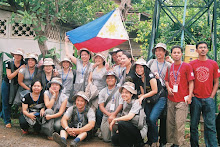Added information from the World Water Day Website:
The world water crisis is one of the largest public health issues of our time. Nearly 1.1 billion people (roughly 20% of the world’s population) lack access to safe drinking water1. The lack of clean, safe drinking water is estimated to kill almost 4,500 children per day2. In fact, out of the 2.2 million unsafe drinking water deaths in 2004, 90% were children under the age of five3. Water is essential to the treatment of diseases, something especially critical for children.
This problem isn’t confined to a particular region of the world. A third of the Earth’s population lives in “water stressed” countries and that number is expected to rise dramatically over the next two decades4. The crisis is worst in developing countries, especially in Sub-Saharan Africa and South Asia.
The world water crisis is created by a confluence of factors including climate and geography, lack of water systems and infrastructure, and inadequate sanitation, something that 2.6 billion people (40% of the world’s population) lack access to5. Some of these countries have additional problems, including high levels of arsenic and fluoride in drinking water6.
Many women and young girls in rural areas in Sub-Saharan African and other parts of the world must trek as much as six miles everyday to retrieve water for their families7. Due to this manual labor, such women and children are prevented from pursuing an education, maintaining their households or earning additional income8.
Thus, the lack of clean water, coupled with the lack of basic sanitation and a dearth of hygiene education, is one of the largest obstacles to progress and development in these regions and across the world. The UN has prioritized water access among its Millennium Development Goals because it contributes to such widespread suffering, including increased poverty, high child mortality rates, depressed education levels, and political instability. Without question, the world water crisis condemns billions of people to a perpetual struggle to survive at the subsistence level,9 thus inspiring millions to engage and alleviate this problem. Join us. Get involved today.
Sources: [1] WaterAid, 2005 [2] UNICEF/WHO Water for Life, Making it Happen, 2005 [3] UNICEF/WHO Water for Life, Making it Happen, 2005 [4] BBC News October 19, 2004 [5] UNICEF/WHO Water for Life, Making it Happen, 2005 [6] Department of International Development, Water Action Plan, March 2004 [7] UNESCO/ International Year of Fresh Water 2003 [8] UNESCO/ International Year of Fresh Water 2003 [9] UNICEF/WHO Water for Life, Making it Happen, 2005
Monday, 17 March 2008
Subscribe to:
Post Comments (Atom)


No comments:
Post a Comment